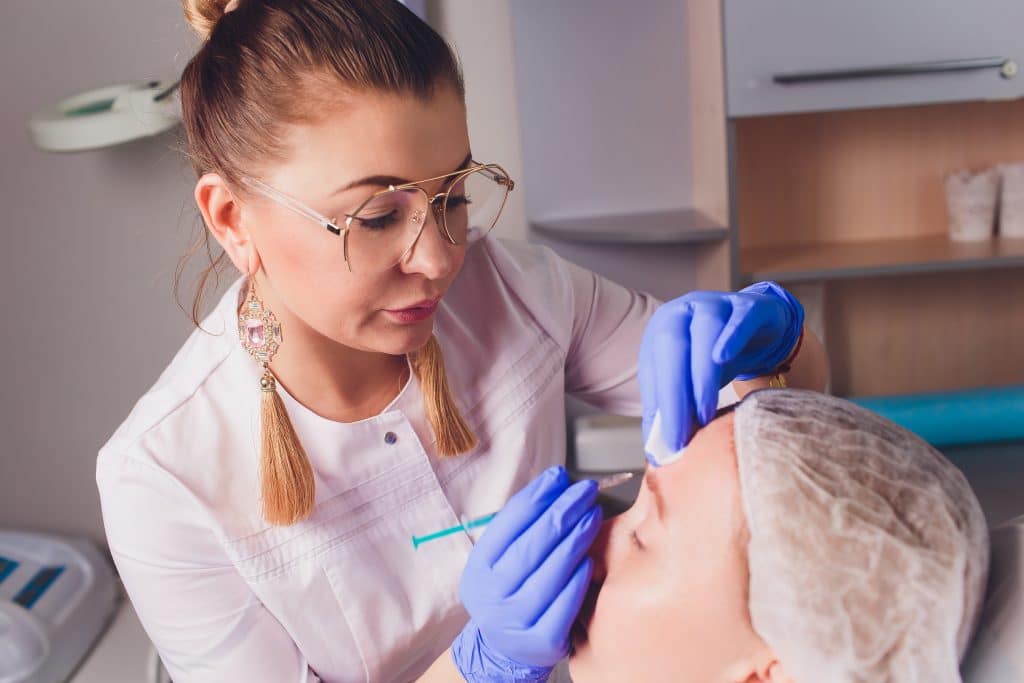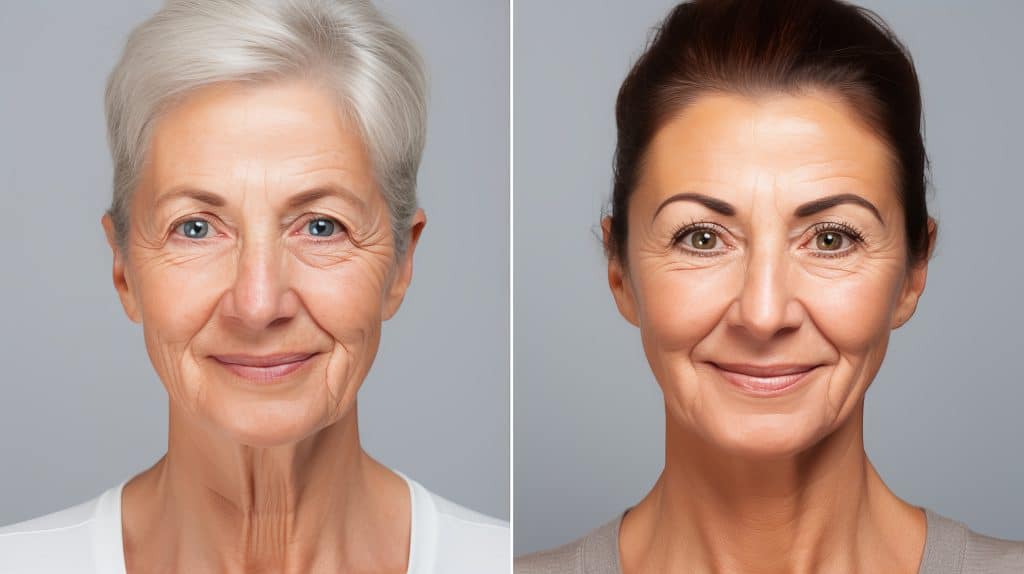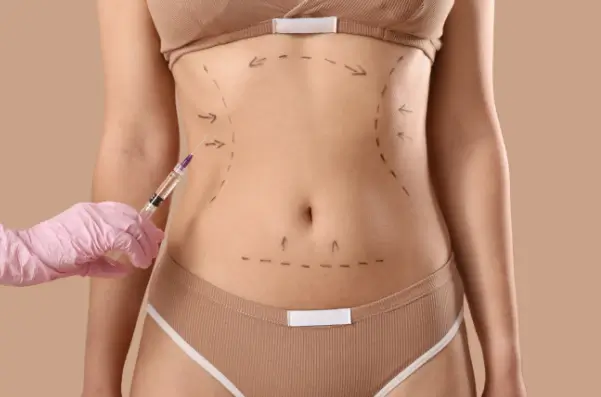Are you worried about the safety of Botox for your facial concerns? You’re not alone. Many people are seeking ways to ensure a safe Botox experience. This blog post will provide essential tips and information to help guide you towards a safer, more informed decision-making process regarding Botox treatments.
Stay with us for some invaluable insights!
Key Takeaways
- Botox is a treatment that can help stop migraine pain by blocking bad signals to the brain. It was okayed by FDA in 2010 for migraines.
- When getting Botox, pick a doctor who knows what they’re doing. Check their background and talk to them first.
- Sometimes, Botox can cause side effects like neck stiffness or muscle weakness. Talk about risks and your health history before you get it.
- To stay safe with Botox, share any allergies you have and go over your medical past with the doctor.
- After getting Botox, take it easy. Skip hard workouts and too much sun right away.
What is Botox and How Does it Work?
Botox, also known as botulinum toxin, is a neurotoxin that induces temporary muscle paralysis. Its mechanism involves interrupting the nerve signals to the muscles. This prompts the question: “Is Botox a cosmetic procedure?“
Botulinum toxin injectables for migraines

Botulinum toxin injectables, often known as Botox, have changed the game for many dealing with chronic migraine headaches. Approved by the Food and Drug Administration in 2010, this treatment targets pain pathways to relieve symptoms.
It’s made from a powerful toxin, yet when used in small doses by skilled professionals, it proves safe and effective for migraine relief.
Doctors use Botox to help those who suffer regularly from migraines. By interrupting the pain signals sent to the brain, these injections can significantly reduce headache days for patients.
This brings hope and improvement to their quality of life, showing how botox works for migraines beyond its cosmetic uses.
Mayo Clinic Q and A
Mayo Clinic offers Q&A sessions that shed light on Botox’s safety, effectiveness, and its use for medical conditions like migraines. These sessions make it clear that the FDA approved On a botulinum toxin A or Botox in 2010 for treating chronic migraine headaches.
Experts from Mayo Clinic answer common questions, ensuring that medical professionals understand how to provide treatments safely.
In these discussions, they also talk about how under the care of a licensed and skilled professional, Botox injections are generally safe. This is key information for anyone in aesthetics looking to assure their patients about the procedure.
They focus on delivering facts straightforwardly – emphasizing that with proper care, botox can be a life-changing treatment for those with chronic migraines.
Botox for Migraines and Chronic Headaches
Botox can help relieve migraine pain. It works by blocking chemicals that carry pain signals from the brain. This treatment has benefits, but it also has potential side effects.
How Botox works
Botox injections target nerve endings. They block chemicals that send pain signals. This is how they help with migraines and headaches. The drug finds its way into the nerves and stops the bad signals from reaching the brain.
Experts are looking closely at Botox for migraine relief. They think it blocks pain paths but are still figuring out all the ways it helps. This is promising news for those who have these issues often.
Benefits of Botox for migraine pain relief
Botox injections can provide significant relief for individuals suffering from chronic migraines. Not only does it reduce the frequency of migraine attacks, but it also decreases the intensity of pain associated with them.
Studies have shown that Botox treatments may particularly benefit those experiencing 15 or more headache days per month, offering a life-changing solution for many patients dealing with debilitating migraine symptoms.
Now let’s explore some helpful safety tips to ensure a secure and successful Botox experience for both patients and medical professionals in aesthetics.
Side effects
Botox injections for migraines may lead to common side effects such as neck stiffness and muscle weakness.
Moreover, potential side effects include pain, bruising, and swelling at the injection site; flu-like symptoms; dry mouth; discomfort or pain at the injection site; tiredness; double vision; and eye problems. Headaches can also occur with facial injections, usually resolving a few days after treatment.
Safety Tips for a Safe Botox Experience

Ensure your doctor is reputable. Understand the procedure and potential risks. Discuss any allergies and medical history.
Finding a reputable doctor
When looking for a doctor to administer Botox injections, consider the following:
- Experience and Credentials: Look for a doctor with specific experience and credentials in providing Botox injections.
- Reputation: Research the doctor’s previous work and check online reviews to ensure they are reputable and have a history of successful procedures.
- Patient Testimonials: Seek out patient testimonials to get an understanding of their experience with the doctor.
- Consultation: Schedule a consultation with the doctor to discuss your needs, ask questions, and gauge their approach and professionalism.
Understanding the procedure and potential risks
Botox is a straightforward procedure involving injections into targeted facial muscles to reduce wrinkles. Potential risks include pain, swelling, and headaches, while more serious complications are rare.
It’s important for medical professionals to thoroughly discuss these risks with patients prior to treatment. Understanding a patient’s medical history and any allergies is crucial in ensuring a safe and successful Botox experience.
It is crucial for the practitioner to carry out the Botox procedure accurately to avoid unwanted results or harm for the patient. Finding a trustworthy doctor who has experience in administering Botox injections greatly reduces potential risks associated with this treatment.
Discussing any allergies and medical history
Before you discuss allergies and medical history with your patients, here are important points to consider:
- Patients should disclose any history of severe allergies or anaphylaxis before considering Botox treatment.
- It’s crucial to ask about any allergies to lidocaine or the ingredients in Botox.
- A thorough review of the patient’s medical history and potential allergies is essential before proceeding with Botox injections.
- Any previous allergic reactions to similar products such as Prosigne must be reviewed before administering Botox.
- If there’s a known history of allergic reactions to Botox or its components, it’s best to avoid administering these injections.
Remember that patient safety depends on disclosing such information thoroughly for a safe Botox experience.
Conclusion: Botox for Migraines – A Life-Changing Treatment
Looking for a safe Botox experience? Here’s what you need to know:
1. Always consult a licensed provider for quality and safety.
2. Take care after the treatment—avoid strenuous exercise and excessive sun exposure.
3. Verify the practitioner’s credentials before getting Botox done.
Remember, your safety comes first!
About: Medical Spa RX provides medical practices with premium products at the best prices, including safe options like Ellanse filler, which is rigorously tested for safety. With a simple and easy-to-navigate purchasing process, you can get Profhilo and other popular, reliable names in no time. They also offer special discounts, wholesale rates, and free shipping for bulk purchases, so your practice can maintain a good stock and always keep treatments available.
FAQs
1. How do I pick a safe place to get Botox?
Look for clinics with licensed professionals and good reviews.
2. What should I ask the doctor before getting Botox?
Ask about their experience, the type of Botox they use, and what you can expect during recovery.
3. Can anyone have an allergic reaction to Botox?
Yes, but it’s rare; always discuss your allergies with your doctor first.
4. How long does it take to see results from Botox?
You’ll usually see results in 7-14 days after treatment.
5. Is there anything I shouldn’t do after getting Botox?
Avoid rubbing the treated area or lying down for 4 hours post-treatment to prevent spreading the toxin.





















